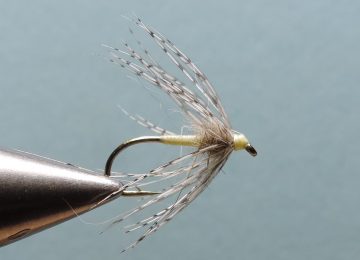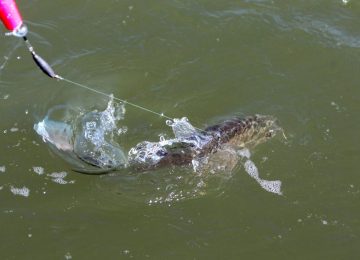In my younger days I spent many an afternoon and evening surfcasting at Birdlings Flat – also called Baileys Beach. I remember the rich red sunsets in particular very well. The best fishing here is usually later in the day. So the setting sun generally heralds the start of improved fishing.
The most likely species to be caught during the day are kahawai. Looking back at my old fishing diaries, rather than relying exclusively on memory, I would catch kahawai on most days. Sometimes heaps of them when a school came close enough to be within casting range. I’d mostly take the kahawai on baited hooks set on three hook paternoster rigs.
This steeply shelving shingle beach runs along the seaward side of the narrow strip of land that divides the vast expanse of Lake Ellesmere from the sea. It is an open rather featureless area dominated by the cut-off spurs of Banks Peninsula to the east.
This area has a rich Maori history. There was a pa (fortified village) called Oruaka up on the hill overlooking Lake Forsyth and another pa at Taumutu, at the far end of the 30 odd kilometres Kaitorete Spit. This whole area was a massive food basket to Maori.
Looking behind our fishing position on the beach you can see in the foreground to the right where the bulldozers have opened a channel to lower Lake Forsyth. The smaller channels have been dug by the locals to catch eels.
Prior to European settlement in Canterbury, some 150 years ago, Lake Ellesmere (Te Waihora ) was much larger. It stretched all the way back to where Lincoln University is today. Back then, of course, the Waimakariri River wasn’t confined within stop-banks. Sometimes following heavy rain in the Southern Alps this wide braided river would take a radical change of direction and even flow south of Banks Peninsula and straight into Lake Ellesmere itself. The heavily bushed margins of Lake Ellesmere provided the perfect habitat for birds, eels, yellow-eyed mullet and flounder. Until about forty years ago introduced brown trout also thrived in Lake Ellesmere. Sadly today both Ellesmere and the smaller Lake Forsyth are mere shadows of what they once were. Intensive farming and artificially lowered lake levels have caused both lakes to become almost stagnant.
Birdlings Flat is about an hour’s drive from Christchurch. If you are coming from the city it is best to do a little research on the swell and weather conditions before leaving home. The best wind direction is a nor-wester which tends to flatten the sea out. A nor-wester at Birdlings Flat also means you will be casting with the assistance of a tail-wind. This is always good. When the wind is blustery you need only cast upwards and the wind takes care of the rest – well almost. This is also the best wind direction if you are heading to Birdlings Flat to go kite fishing.
The car park at Birdlings Flat where Kaitorete Spit meets Banks Peninsula. Don’t drive on the stones unless you are riding a quad bike or you’ll get hopelessly stuck immediately! I have caught countless fish here over the years. I once caught two big blue moki down by the rocks one evening when the see was eerily flat calm. I have never seen the see that calm before or since. There wasn’t a breath of wind.
The next best wind direction is a northeasterly depending on swell conditions. You have to bear in mind that the sea at Birdlings Flat can get very rough following a blow from the southerly quarter. Storms to the south of New Zealand at times cause huge swells to come roaring into the Canterbury Bight all the way from the great Southern Ocean. I have seen swells at Birdlings Flat over eight metres high. The breakers from these huge swells can run several hundred metres up the beach. In such conditions, fishing is right out of the question!
This is one of several large sevengill sharks I have caught surfcasting at Birdlings Flat over the years.
These big ocean swells can take over a week or more to subside depending on wind strength and direction. The best swell direction is north-west. Swell from any other direction is OK provided it is less that one metre and easing. If the swell is from the southerly quarter even though it might be only a metre or so and easing this often causes your line to become buried in the stones. This causes a bust off when you try to wind in your line. To counter this effect try the following. When you first start fishing doesn’t leave your line out for more than a few minutes before retrieving your gear. If it is going to be buried bringing it in early will give you a chance to get it back before it becomes a complete loss. Secondly, try to keep your line as high above the water as possible by casting out with breakout sinker and then taking up the slack line onto your reel.


















